The Global Image of the Year 2022 competition dominated our fan-favorite images this month, with our Instagram followers showing them a lot of love! Image of the Year represents the best of scientific imaging, with the winners selected from hundreds of submissions from dozens of countries around the world.
Using techniques ranging from fluorescence to histostains to confocal, the array of winning images captures the breadth of beauty found in the microscopic world.
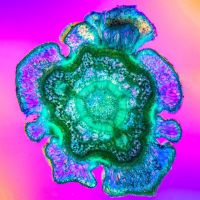


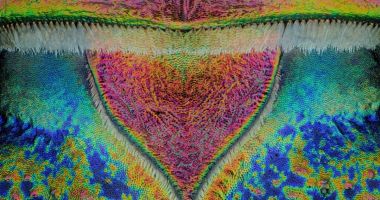

So it’s no surprise that our top post in August is a beautiful gallery featuring five of the Image of the Year 2022 honorable mentions. With close-ups of plants, beetles, and beyond, this collection of colorful images shows the hidden beauty that can be found at the microscopic level.
Description of images from left to right, top to bottom:
Cross section of a blue spruce (Picea pungens) branch. Image courtesy of Robert Berdan (Canada), an Image of the Year 2022 honorable mention.
Tripos macroceros. A unicellular microalga with three horns. Image courtesy of Uriel Ruiz (Mexico), an Image of the Year 2022 honorable mention.
Pistils of dandelion were collected and made into slide samples. Image courtesy of Liu Ruming (China), an Image of the Year 2022 honorable mention.
Scutellum of a tiger beetle. Image courtesy of Thorben Danke (Germany), an Image of the Year 2022 honorable mention.
Fine-grained Echinococcus protocephalus. Image courtesy of Ru Jinwei (China), an Image of the Year 2022 honorable mention.
To see all the winning images from Image of the Year 2022, visit olympus-lifescience.com/ioty.





In second place this month, we have another stunning gallery featuring the remaining five honorable mentions from Image of the Year 2022. Looking at these microscope images makes us feel like we’re in a museum of art and science!
Description of images from left to right, top to bottom:
Lateral head of a zebrafish, 72 hours after fertilization. Image courtesy of Layra Cintrón-Rivera (USA), an Image of the Year 2022 honorable mention.
Dorsal view of a red-backed salamander’s skull. Stained with Movat’s pentachrome technique. Image courtesy of Katelin Murphy (USA), an Image of the Year 2022 honorable mention.
Diatoms are unicellular organisms, which can be found in the oceans, waterways, and soils of the world. Image courtesy of Michael Shribak (USA), an Image of the Year 2022 honorable mention.
Trichromatic confocal imaging of isolated cardiomyocytes from rats. Image courtesy of Jing Ling (China), an Image of the Year 2022 honorable mention.
Autofluorescence of the tip of the stamens of flowers. Image courtesy of Mei Yu (China), an Image of the Year 2022 honorable mention.
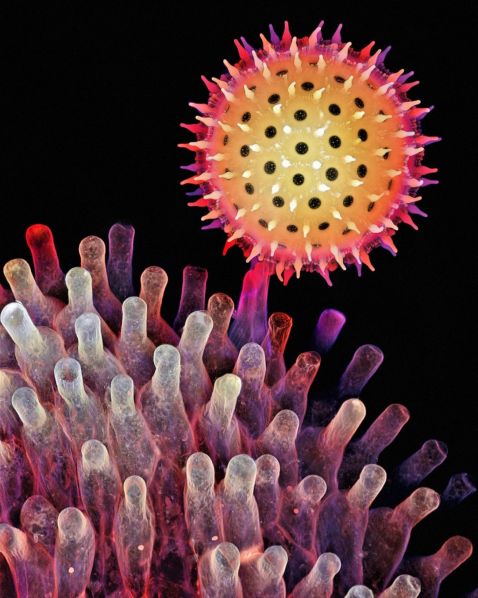
This pretty picture, captured by Igor Siwanowicz, won the regional prize for the Americas in our Image of the Year 2022 competition! The image is a depth color-coded projection showing a germinating pollen grain of a morning glory attached to the stigma. Igor is a master at capturing unexpected beauty under the microscope, as his image of a snail earned him an Image of the Year 2021 honorable mention.
Igor explains, “There is beauty in nature on every scale, and it is ubiquitous—you can find it pretty much everywhere, sometimes in the least expected places, like inside the mouth of a snail (a snail radula, or a rasping tongue, won me an honorable mention last year). Of course, the beauty is truly in the eyes of the beholder, and one needs to approach those unfamiliar, alien-looking, sometimes very abstract forms with an open mind.“
Image courtesy of Igor Siwanowicz, the Image of the Year 2022 regional winner for the Americas.
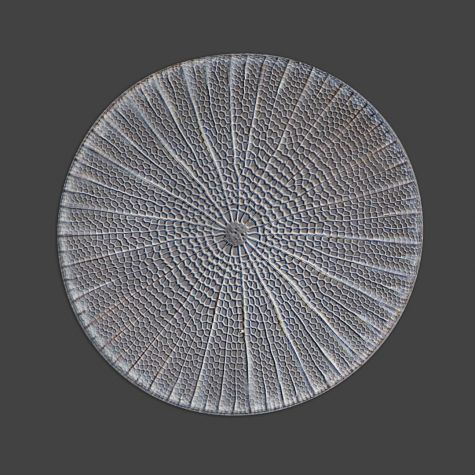
Diatoms are unicellular organisms, but they can come in a variety of shapes and sizes and occur either as single cells or in colonies. This Arachnoidiscus marine diatom sampled in Sagami Bay, Japan, is practically perfect in its roundness and symmetry. The photographer described it as a “circular city urban planning layout,” and we can say confidently that it’s a city we would love to live in!
Image courtesy of Macro Cosmos. Captured using an Olympus BX53 microscope.
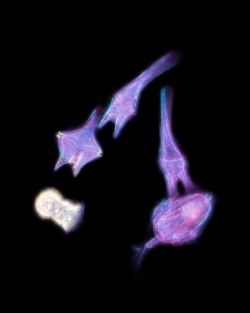


Uriel Ruiz, an Image of the Year 2022 honorable mention, gets another feature in this month’s roundup of top images! Uriel captured a harmful algal bloom (HAB) of the dinoflagellate Tripos hircus, with an abundance of other peridinoid dinoflagellates like diplopsaloids and Protoperidinium.
According to the National Institute of Environmental Health Sciences, “A harmful algal bloom (HAB) occurs when toxin-producing algae grow excessively in a body of water. The excessive algal growth, or algal bloom, becomes visible to the naked eye and can be green, blue-green, red, or brown, depending on the type of algae.”
While these can impact marine life (and even impact human health), they are another example of how something toxic can also be attractive. This sample from an HAB consists mostly of dinoflagellates but also includes tintinnids and copepods.
Image courtesy of Uriel Ruiz. Captured using an Olympus BX50 microscope at ~400X.
Bonus video! When life gives you avocados, make guacamole. But first, put them under the microscope!
"In this video you can see how avocado cells are filled with lipid droplets. In fact, the flesh of avocados contains around 60% oil! Don’t you worry though, these lipids are mainly monounsaturated fatty acids that are linked with cardiovascular system benefits by reducing cholesterol levels and anti-inflammatory effects; they’re the good guys unlike trans or saturated fat!
Nowadays, avocado trees are cultivated around the globe, especially in warm temperate and subtropical regions like Mexico, Chile, Brazil, Guatemala, Dominican Republic, New Zealand, and South Africa, to name a few. Mexico is the largest avocado producer and responsible for 25% of the world production.
Avocados are not only rich in lipids, but they also contain fat-soluble vitamins that aren’t very common in other fruits, such as vitamins A, B, D, and E. Avocados are also a good source of protein and potassium, and the oil is often extracted and used in the food, cosmetics, and pharmaceutical industries."
Video and caption courtesy of Chloé Savard. Captured using an Olympus BX53 microscope.
To see more images like these, make sure to follow us on Instagram at @evidentlifescience!
Interested in sharing your own images? Visit our image submission site.
Related Content
Stars of the Show—Our Most Popular Microscope Images for July 2023
Easy Being Green—Our Most Popular Microscope Images for June 2023
Salt to Stinging Nettles—Our Most Popular Microscope Images for May 2023
.jpg?rev=7724)
